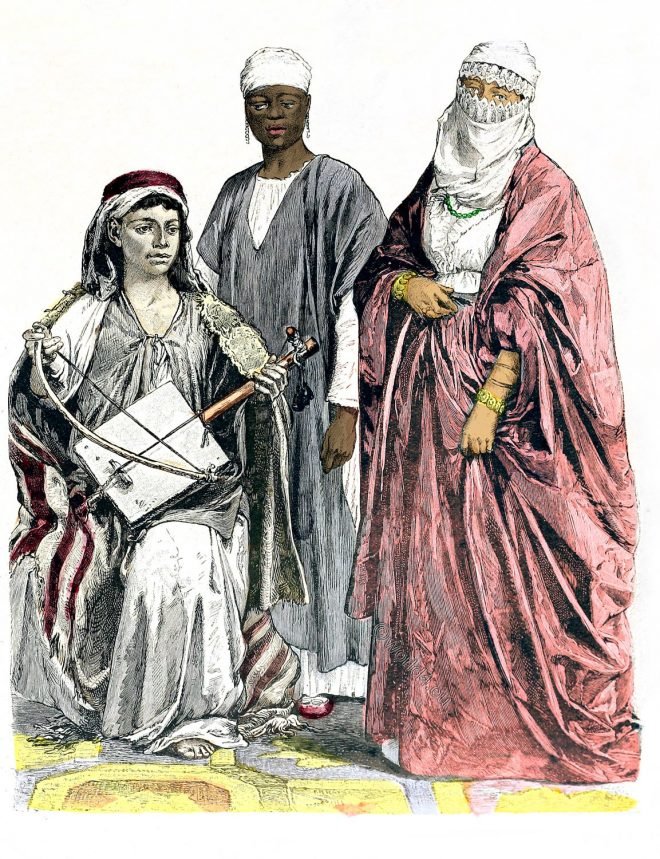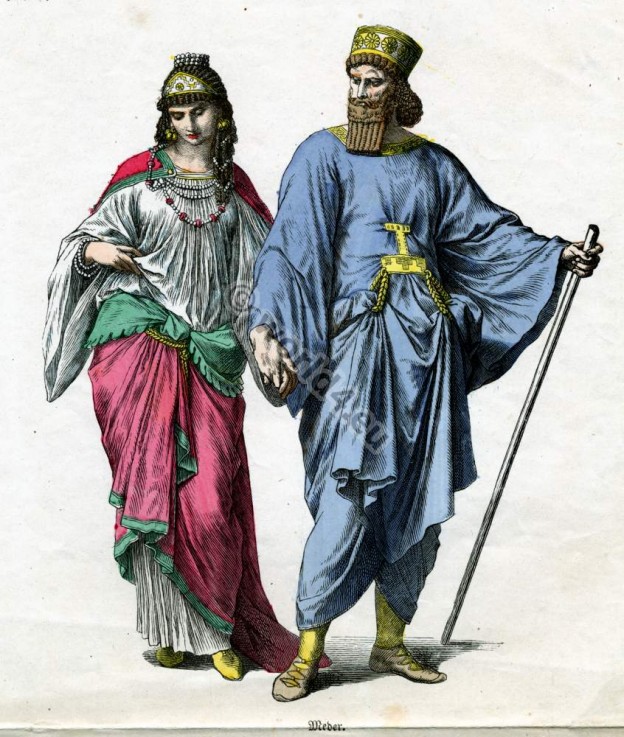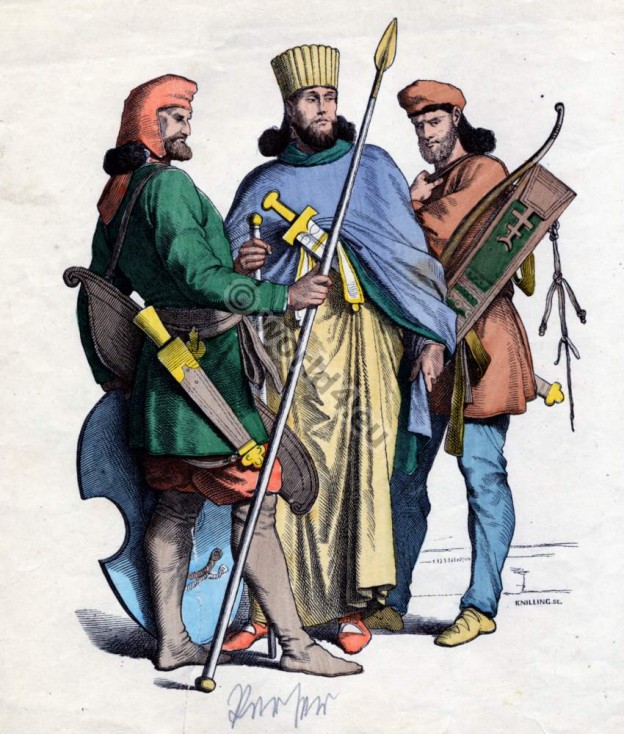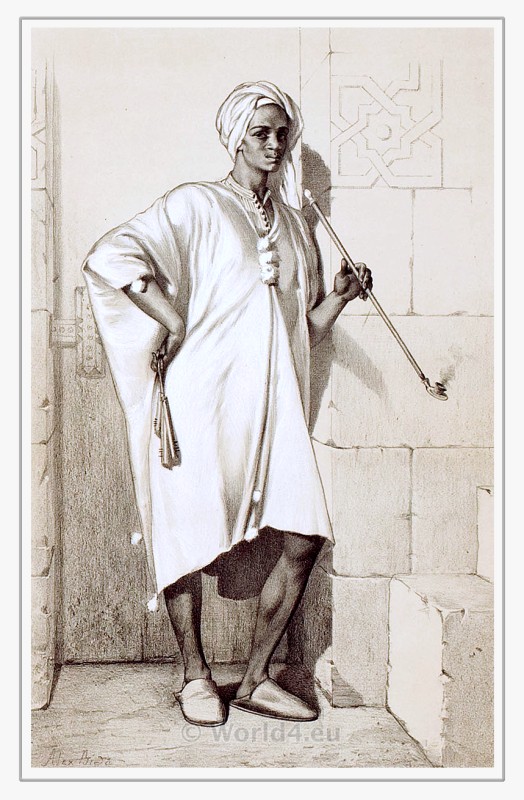A Bedouin girl in a shirt-like garment, called “mig wal”. Next to her is an Egyptian Fruit Vendor. She wears a cape or cloak, jilbab, Jilaabah called. Her head is covered by a veil, the niqab.
Category: Middle East
Dress of Tambourine player. Veiled water wearer and Servant in 1850.
Tambourine player in the jilbab. Veiled water wearer in a chador. Servant with a turban, tarboosh, vests, harem pants belted with a wide cloth that Sal Sapik, (SAL û Sapik “pants and shirt”).
Bedouin musician. Nubian slave. Egyptian traditional street clothes.
A young Bedouin with Kufiyya, Jilbab and jacket. Nubian slave girl wearing a caftan over a light of woolen dress. Egyptian woman in street clothing.
Assyrian High Priest and King clothing
The history of costumes. Mesopotamia. Assyrian, Babylonian costume history.
Noble Median. Noble Persian. Persian (soldier).
On the history of costumes. Thirty-fourth sheet. XVth century. Assyrians, Persians, Medes.
Costumes and court dresses of Medes nobility.
Costumes and court dresses of Medes nobility. Ancient female and male clothing.
Ancient Persian warriors and king costumes.
On the history of costumes. Thirty-fourth sheet. Antiquity. Assyrians, Persians, Medes. Münchener Bilderbogen No. 635. Illustration by A. Müller. Persian warrior. Noble Persian. Persian Warrior. Source: Münchener Bilderbogen 1848 to… Read More
Ancient Ptolemaic and their Queens. Headdresses and crowns.
Different Ptolemaic and their Queens. Headdresses and crowns. Successors of Alexander the Great.
Almeh a class of courtesans or female entertainers in Arab Egypt.
Almeh was the name of a class of courtesans or female entertainers in Arab Egypt. The term became synonymous with ‘belly dancer’ in 19th-century European Orientalism.
A Nubian from Egypt smokes a pipe in 1850.
Egypt. Nubian in traditional dress from 1850 smokes a pipe. In the army and in police service, the Nubians played a major role at all times.










